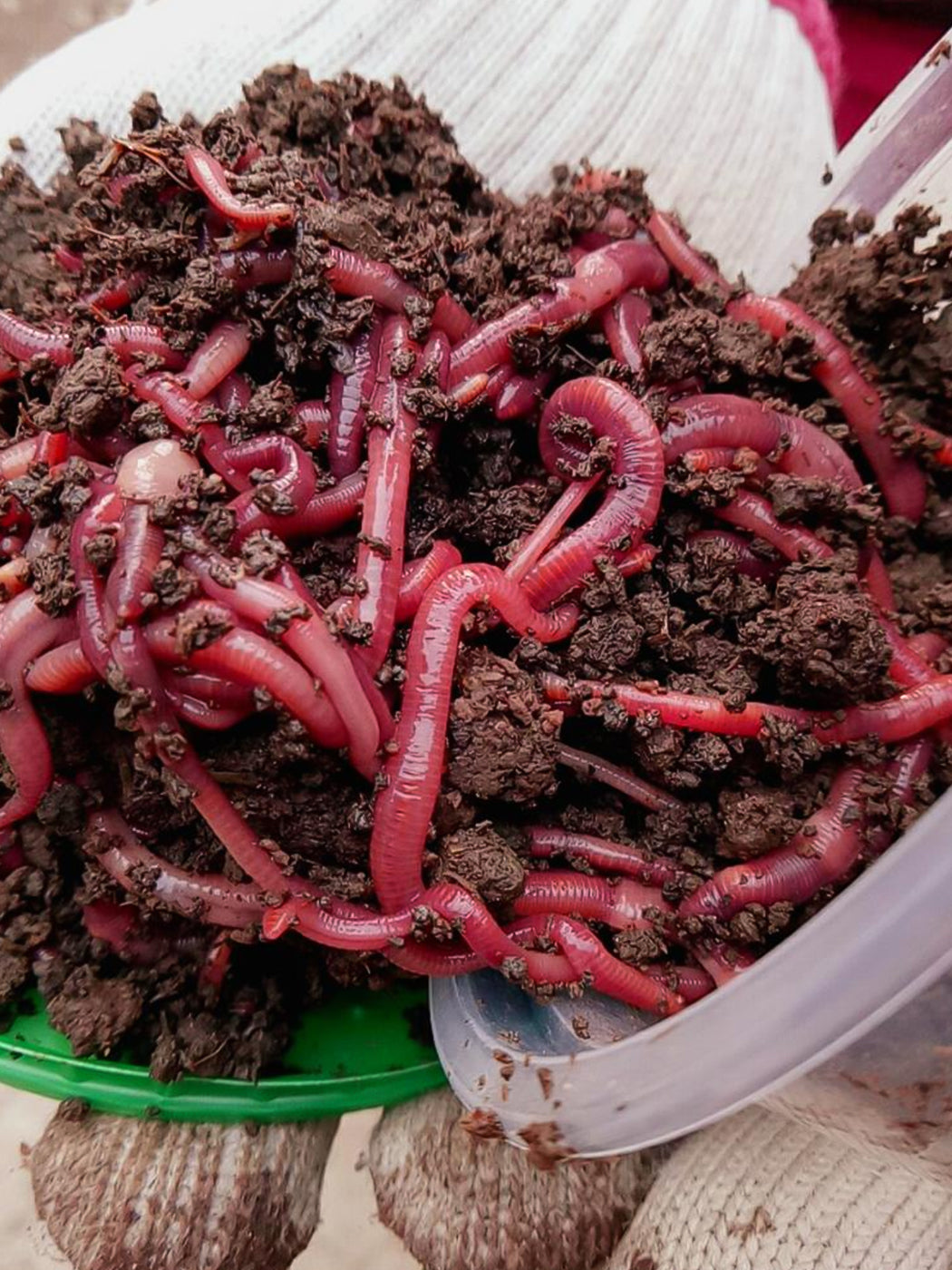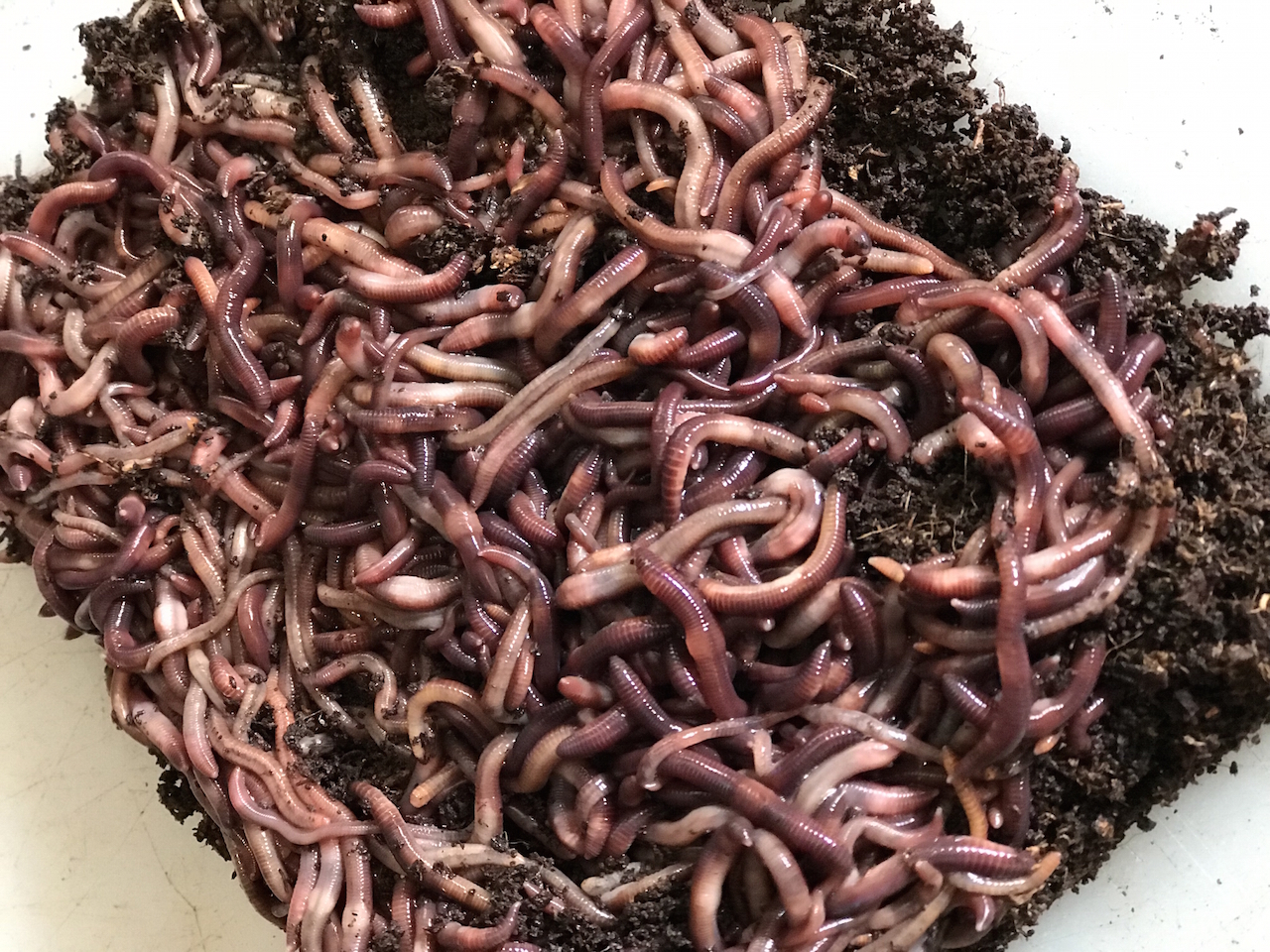Open the Keys of Red Wigglers: Your Overview to Composting Success
The assimilation of red wigglers right into composting methods provides a significant possibility for boosting soil health and advertising sustainability. Comprehending their needs and behaviors is crucial for maximizing their capacity, from setting up an ideal worm bin to feeding them the right products.

What Are Red Wigglers?
Indigenous to North America, they are usually found in decomposing leaves and compost heap, where they play an important duty in nutrient recycling. Their adaptation to staying in a moist, cardiovascular environment enables them to eat large amounts of natural waste, simplifying into nutrient-rich spreadings that boost soil health and wellness.
Red wigglers reproduce quickly, with a solitary worm efficient in creating numerous cocoons each week, each including numerous hatchlings. This rapid reproduction rate adds to their effectiveness in composting operations. They like temperature levels between 60 ° F and 80 ° F, and their activity level boosts significantly within this range, additional helping in the disintegration process. Understanding the biology and habits of red wigglers is necessary for optimizing their potential in composting applications.
Advantages of Making Use Of Red Wigglers
Using the power of red wigglers in composting supplies numerous advantages that boost dirt wellness and advertise lasting waste monitoring. These impressive microorganisms successfully damage down raw material, transforming kitchen scraps and yard waste into nutrient-rich vermicompost. This finished item is incredibly valuable for plant development, as it enhances soil structure, increases moisture retention, and boosts vitamins and mineral schedule.

Establishing Your Worm Bin
Developing an efficient worm container is a simple procedure that can substantially enhance your composting initiatives. The very first step is picking a suitable container. Worm containers can be made from plastic storage containers, wood boxes, or commercially available worm containers. Ensure the container has adequate drain and air flow holes to preserve optimum wetness levels and air movement.
Next, prepare the bed linen product, which works as the worms' habitat. A mix of shredded paper, cardboard, and coconut coir functions well, providing a comfortable atmosphere for the worms. Go for a bedding depth of regarding 4-6 inches. Dampen the bed linens gently, ensuring it looks like a moist sponge without excess water merging at the base.

Feeding Your Red Wigglers
To make sure the health and wellness and productivity of your red wigglers, it is vital to give them with a balanced diet that fulfills their nutritional demands. Red wigglers prosper on a diverse selection of natural materials, which not just supply essential nutrients however also advertise efficient composting.
Beginning by incorporating cooking area scraps such as vegetable peels, fruit cores, and coffee premises. Prevent citrus fruits, onions, and garlic, as these can be detrimental to worm health and wellness. Additionally, present shredded paper, cardboard, and dry fallen leaves to create a well-aerated atmosphere.
Feeding regularity must be monitored; normally, worms can consume half their body weight in food weekly. It is vital to avoid overfeeding, as excess food can cause unpleasant odors and bring in pests. A great practice is to add food in tiny amounts, enabling worms to refine it before introducing extra.
Maintaining wetness degrees is also important; the bed linens should be moist yet not soggy. Finally, make sure to regularly inspect the temperature level and pH degrees of the bin to guarantee an ideal environment for your red wigglers, eventually boosting their composting performance.
Harvesting and Using Garden Compost
An effective composting procedure with red wigglers finishes in the rich, dark compost called vermicompost, which can significantly boost soil wellness and plant development. Gathering this nutrient-dense material usually occurs every 3 to 6 months, depending upon the size of your system and the amount of raw material being processed.
To collect, delicately different the compost from the worms and any kind of undecomposed products. One efficient method entails relocating the contents of the container away and adding fresh bed linens and food to the void, urging the worms to migrate. After a few days, the garden compost can be gathered from the contrary side.
It is necessary to utilize vermicompost properly to optimize its benefits. By integrating vermicompost right into your gardening program, you not just recycle natural waste yet also develop a thriving environment that sustains sustainable gardening methods.
Verdict
In summary, red wigglers serve as exceptional allies in composting efforts, transforming organic waste into nutrient-rich vermicompost. By understanding the optimal problems for their environment, feeding needs, and garden compost harvesting strategies, garden enthusiasts can improve dirt health and wellness and promote plant vitality.
Comments on “Experience the Perks of Using Red Wiggler Express for Superior Lawn Care”